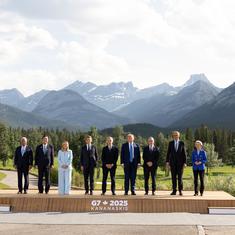Here are their choices. We liked what we found about these books. We think you will, too.
David Davidar, Aleph Book Company is publishing India Shastra, by Shashi Tharoor
The third in Tharoor’s non-fiction series on India (a trilogy?) after India: From Midnight to the Millennium, and The Elephant, The Tiger and the Cell-phone, this 200,000-thousand-word book examines the swift, disruptive and, often, brutal changes that India has been subjected to in recent times. The Congress politician examines the ways in which Prime Minister Narendra Modi and the BJP has begun to dominate politics the way the Congress once did, attempting to change the way people work, think and live.
Why you should read it: Tharoor doesn’t flinch from accepting the economic revival, the sense of purpose in foreign policy, and the optimism in the air. But he also questions the intolerance of free speech, dissent and religious freedom that have risen alongside, and tries to imagine the future as a confluence of these two streams.
Chiki Sarkar, Penguin Books India is publishing Flood of Fire, by Amitav Ghosh
The third and final part of Amitav Ghosh's Ibis trilogy. It is 1839, and the Chinese no longer want the British to continue with their lucrative opium smuggling. As talks fail, war is declared. Ghosh follows the eastward journey of one of the vessels, The Hind, with its motley crew of voyagers from the earlier books, including Zachary Reid, the impoverished young sailor searching for his lost love, and Shireen Modi, the determined widow en route to China to reclaim her opium-trader husband's wealth and reputation.
Why you should read it: First, because it’s the third part of an absolutely gripping trilogy, and ties up the disparate strands that have kept readers hanging for several years now. Second, because Ghosh tells extraordinary stories, leaving you guessing where history ends and fiction begins. And third, because this trilogy is almost certainly going to be a classic from the early years of the 21st Century.
Karthika V.K., Harper-Collins India, is publishing The Modi Wave: The Inside Story, by Arvind Gupta and Akhilesh Mishra
Love it or be dismayed by it, Narendra Modi’s sweeping electoral campaign of 2014 has already gone down in history as a game-changer whose dimensions we are only just beginning to understand. But who crafted the mindbogglingly innovative communication strategies used by the campaign team ‒ online as well as offline? Here, for the first time, two of the architects, Arvind Gupta and Akhilesh Mishra, explain how they did it.
Why you should read it: Because this book has been written not by analysts or commentators, but by two of the people who actually ran the incredible campaign that brought Modi to power. There are more secrets revealed on a page than in entire books on politics by others. No outsider could ever have this perspective. An insider account to top all insider accounts.
Meru Gokhale, Random House India, publishing Restart: The Last Chance for the Indian Economy, by Mihir Sharma
One of the handful of contrarian economic journalists in India, writing at a time when most business journalism is a cheerleading squad for big corporates, Mihir Sharma dives into what he thinks must change in India’s policies, administration, and attitude. Identifying the key problems faced by the country ‒ among them our ancient, archaic laws, our enormous and unemployable young population, and our half-built infrastructure, the book looks for solutions flowing from restarts.
Why you should read it: Because what Pratap Bhanu Mehta says is good enough?·”This book is a lively, insouciant, accessible and keenly felt tour d'horizon of the challenges facing India. With a sardonic eye, it exposes the layers of delusion that have prevented us from seeing our problems clearly. It will do what a book is supposed to: provoke thought.” A book that will astonish and even infuriate, and contentious precisely for that reason, even if the claim that this is the last chance may be hyperbole.










